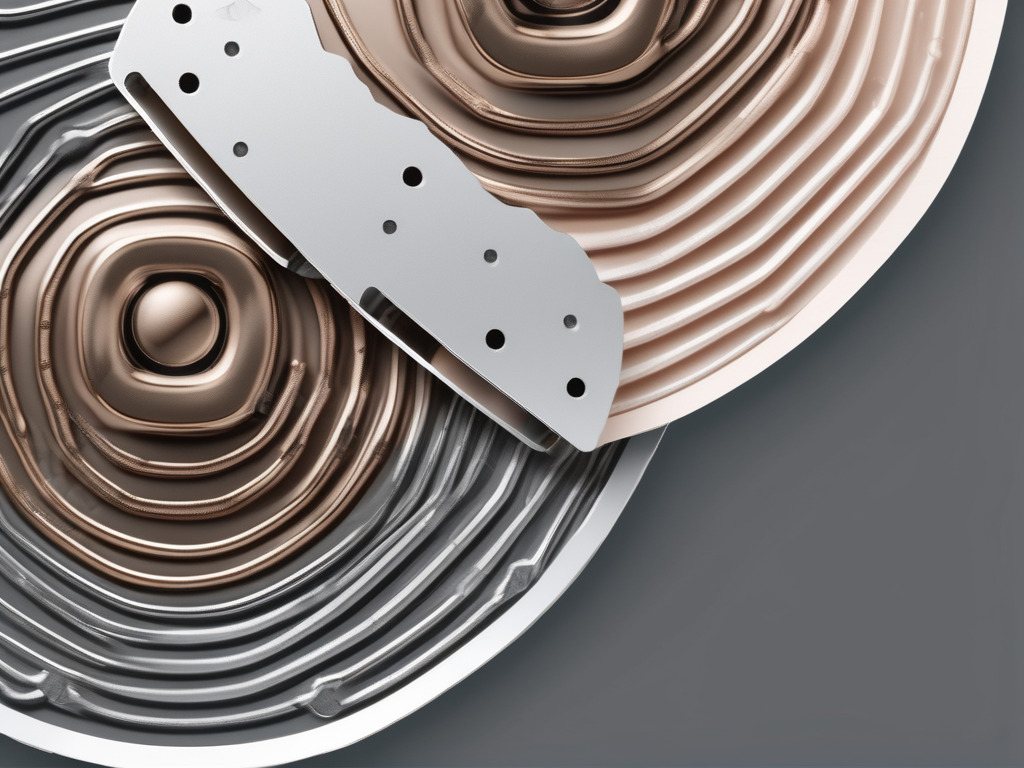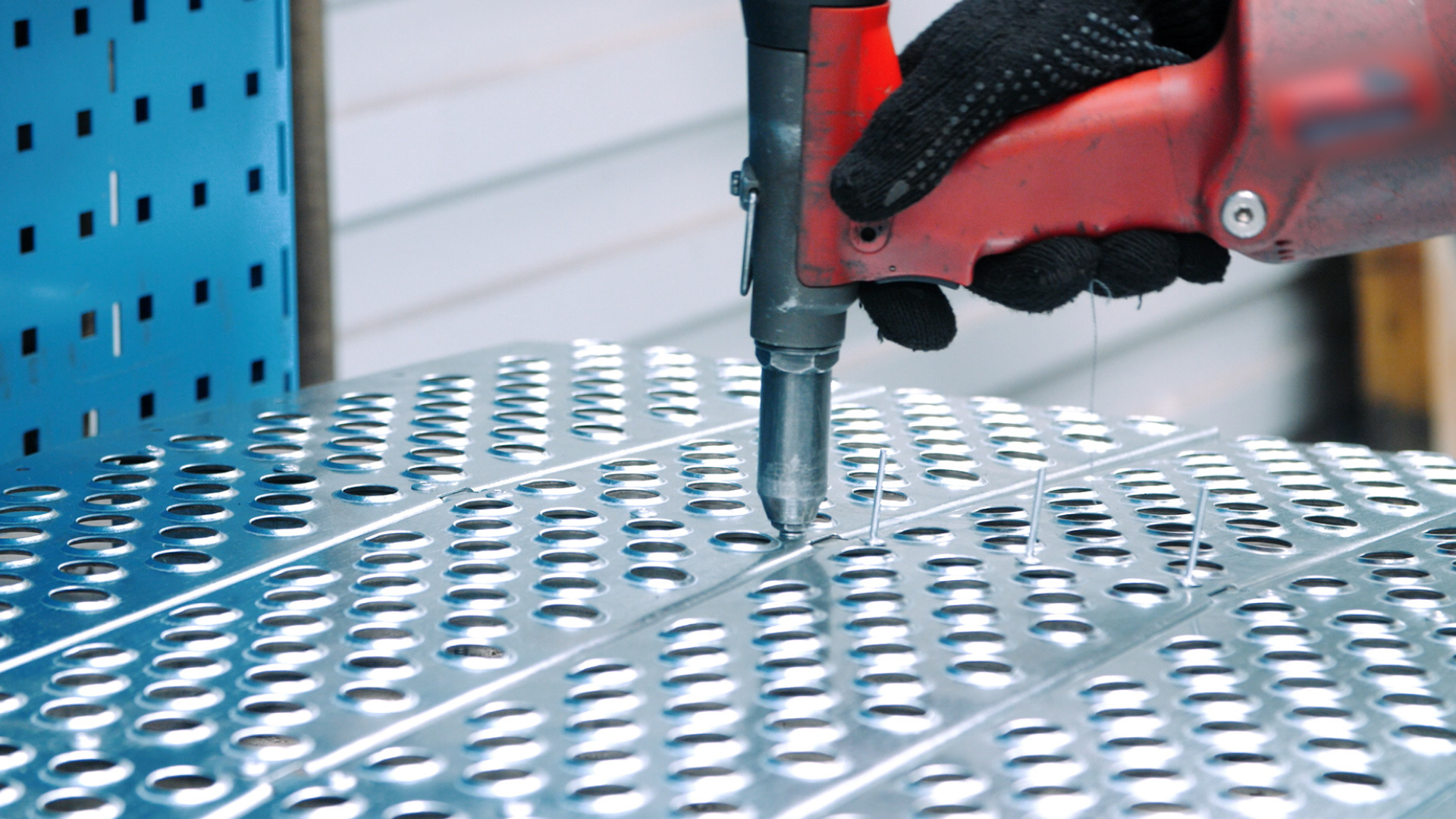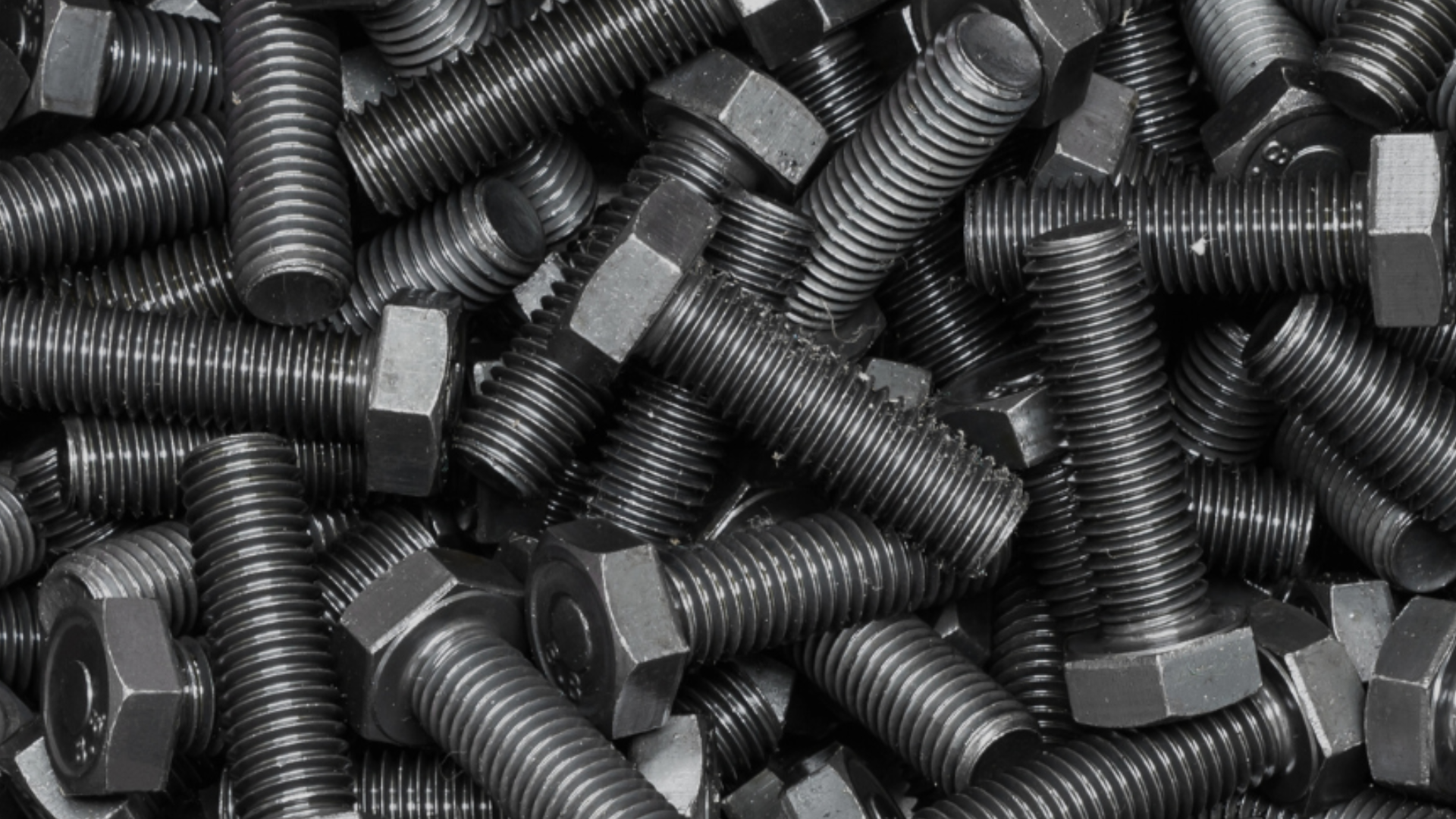When it comes to finishing metal parts, the choice between Alodine and Anodize can be a tough one. Both processes have their advantages and drawbacks, making it important to understand their differences before making a decision. In this article, we will decode the Alodining process, explore the benefits of Alodine coatings, compare them to Anodizing, and delve into the various applications of both finishes. We will also discuss how to make the right choice between the two and highlight the durability and resistance enhancements that can be achieved through Anodizing. So, let’s clear the air on Alodining and Anodizing and help you choose the perfect finish for your metal parts.
Table of Contents
Decoding the Alodining Process
Alodine, also known as chromate conversion coating, is a chemical process that creates a protective layer on the surface of metals like aluminum. It involves applying a solution containing chromic acid or chromium salts onto the metal surface. This solution reacts with the metal, forming a thin, corrosion-resistant coating. Alodine coatings are commonly used to improve adhesion for paint or adhesive applications and provide enhanced corrosion protection.
Understanding the Benefits of Alodine Coatings
Alodine coatings offer several advantages for metal parts. Firstly, they provide excellent corrosion resistance, protecting the underlying metal from environmental factors such as moisture and oxidation. This makes Alodine particularly valuable for aerospace, automotive, and marine applications, where exposure to harsh conditions is common.
Secondly, Alodine coatings can enhance adhesion, making them ideal for applications where paint or adhesive bonding is required. The coating acts as a surface preparation that promotes better adherence, resulting in stronger bonds between the metal and the applied materials.
Furthermore, Alodine coatings offer electrical conductivity, which is an essential consideration for parts used in electrical systems. Unlike some other protective finishes, Alodine does not interfere with the electrical conductivity of the metal, making it a popular choice for electronic components.
Exploring the Differences Between Alodine and Anodizing
While Alodine and Anodizing share some similarities, they differ in terms of process and properties. Anodizing is an electrochemical process that creates an oxide layer on the surface of metals, primarily aluminum. Unlike Alodine, which forms a thin coating, anodized finishes produce a thicker, more durable layer that becomes an integral part of the metal.
One of the key differences between Alodine and Anodizing is the appearance of the finished product. Alodine coatings typically result in a clear or yellowish tint on the metal surface, while anodized finishes can be transparent, colored, or even black.
Another difference lies in the level of corrosion resistance. While Alodine coatings provide excellent corrosion protection, anodized finishes offer even higher resistance. The thicker oxide layer formed during anodizing acts as a barrier, shielding the metal from external elements more effectively.
Furthermore, anodized finishes can be more abrasion resistant than Alodine coatings, making them suitable for parts subjected to mechanical wear or frequent handling.
It is worth noting that the application of Alodine and Anodizing processes is determined by the specific requirements of the metal parts and the intended application. Factors such as the desired appearance, level of corrosion resistance, and the need for enhanced adhesion or electrical conductivity play a crucial role in selecting the most suitable coating method.
Overall, both Alodine and Anodizing offer valuable protective coatings for metal surfaces, each with its own unique set of properties and advantages. Understanding the differences between these processes allows for informed decision-making when it comes to selecting the most appropriate coating solution for a particular application.
Alodine Coatings vs. Anodized Finishes: Unveiling the Drawbacks
Like any finishing process, both Alodine and Anodizing have their drawbacks. While Alodine coatings offer good corrosion protection, they are not as durable as anodized finishes. The thin nature of Alodine coatings makes them more susceptible to wear and tear over time, especially in high-stress environments.
On the other hand, anodized finishes can be more expensive and time-consuming to achieve. The electrochemical process involved in anodizing requires additional steps and equipment, increasing production costs. Additionally, the thicker oxide layer formed during anodizing can affect the dimensions of the metal part, potentially causing fitment or assembly issues.
It is essential to carefully consider the specific requirements of your project when deciding between Alodine and Anodize, weighing the trade-offs between cost, durability, and performance.
One important aspect to consider when choosing between Alodine coatings and anodized finishes is the environmental impact of each process. Alodine coatings typically contain hexavalent chromium, a known carcinogen that poses health risks to workers and can have harmful effects on the environment if not properly managed. Anodizing, on the other hand, is considered a more environmentally friendly option as it does not involve the use of toxic chemicals like chromium.
Furthermore, the aesthetic appeal of the final product may also influence your decision. Anodized finishes offer a wide range of color options and can provide a more decorative appearance compared to Alodine coatings, which are typically more utilitarian in nature. If the visual presentation of your project is a key consideration, anodizing may be the preferred choice despite its higher cost and potential dimensional impact.
Unveiling the Diverse Applications of Alodine and Anodize
Both Alodine and Anodizing find extensive applications across various industries. Let’s take a look at some common sectors that utilize these processes:
Common Industries That Utilize Alodine and Anodize Processes
- Aerospace: Alodine coatings and anodized finishes are widely used in the aerospace industry due to their corrosion resistance and the ability to maintain electrical conductivity. They are applied to aircraft components, such as structural parts, landing gear, and internal panels.
- Automotive: Alodine and anodize processes are essential in the automotive industry for improving corrosion resistance in critical components, such as engine parts, chassis, and suspension systems.
- Electronics: Anodizing plays a crucial role in the electronics industry, providing electrical insulation and protection against wear and tear. It is commonly used in electronic enclosures, connectors, and heat sinks.
- Marine: Alodine coatings are particularly useful in the marine industry, where exposure to saltwater and harsh elements can cause rapid corrosion. These coatings are used on boat hulls, propellers, and other metal components to enhance longevity.
Anodizing vs. Alodining: Making the Right Choice
Now that you have a better understanding of Alodine and Anodizing, you might be wondering: how do I make the right choice for my metal parts? The answer lies in considering your specific requirements and priorities.
If your priority is maximum corrosion resistance and durability, anodized finishes may be the way to go. However, if you need a thinner coating that provides good corrosion resistance, enhances adhesion, and maintains electrical conductivity, Alodine coatings might be the better option.
It’s important to consult with professionals in the field who can assess your project’s needs and offer expert advice tailored to your specific circumstances. They can guide you in choosing the ideal finish that meets your desired performance, budget, and timeline.
Enhancing Durability and Resistance Through Anodizing
Anodizing is an excellent choice for metal parts that require enhanced durability, resistance, and a visually appealing finish.
By creating a thicker oxide layer on the metal surface, anodized finishes provide superior corrosion resistance when compared to Alodine coatings. This is especially valuable for parts that are exposed to harsh environments or undergo frequent handling.
Anodizing can also offer decorative options, allowing you to customize the appearance of your metal parts. There are various methods to achieve colored or even black finishes, giving you the flexibility to match your product’s aesthetics with your brand identity or design preferences.
Not only does anodizing enhance the physical properties of your metal parts, but it can also improve their overall lifespan. By protecting against corrosion, wear, and oxidation, anodized finishes help ensure that your metal parts remain structurally sound and visually appealing for an extended period.
Clearing the Air on Anodizing and Alodining
Demystifying the Alodining Process
The Alodining process may sound complex, but it offers significant benefits for metal parts. By forming a protective coating on the surface of the metal, Alodine enhances corrosion resistance and promotes better adhesion.
Demystifying Alodining begins by understanding the science behind it. When the Alodine solution is applied to the metal, it creates a chemical reaction that produces the thin protective layer. This layer acts as a barrier to environmental elements, preventing corrosion and extending the lifespan of the metal part.
It’s important to note that Alodine coatings require proper surface preparation to achieve optimal results. This typically involves cleaning the metal surface to remove contaminants, such as dirt, oil, or oxide layers, before applying the Alodine solution. Thorough surface preparation ensures maximum adhesion and corrosion resistance.
Exploring the Compatibility of Alodining and Anodizing Processes
What happens when you need the benefits of both Alodining and Anodizing? Good news – these processes are often compatible and can be used together to achieve desired outcomes.
For example, it is common practice to first Alodine coat a metal part and then proceed with anodizing to further enhance its protection and appearance. The Alodine coating acts as a primer, promoting adhesion for subsequent layers, such as a colored or decorative anodized finish.
By combining the benefits of both processes, you can achieve the desired level of corrosion resistance, adhesion, electrical conductivity, and overall durability for your metal parts.
In conclusion, choosing the right finish for your metal parts involves weighing the benefits and drawbacks of Alodine and Anodizing. Alodine coatings offer good corrosion resistance, superior adhesion, and electrical conductivity. On the other hand, anodized finishes provide enhanced durability, higher corrosion resistance, and various decorative options. Understanding your specific requirements, consulting professionals in the field, and considering the intended application of your metal parts will help you make an informed decision. Whether you choose Alodine, Anodizing, or a combination of both, you’ll be able to achieve a finish that enhances the longevity, performance, and aesthetics of your precious metal parts.
At TDH Manufacturing, we understand the critical importance of choosing the right finish for your metal parts, whether it’s Alodine or Anodize. We are here to guide and educate you on these crucial processes to ensure that your projects not only meet but exceed your expectations.
We value each of our customers immensely, recognizing that every project has unique requirements and challenges. Our dedicated team is always ready to answer any questions you might have about metal finishing options. We’re committed to providing you with detailed, understandable explanations and tailored advice, helping you make the best decisions for your specific needs.
Furthermore, at TDH Manufacturing, we offer a wide range of services tailored to your metal finishing needs. Whether you are looking for corrosion resistance, enhanced durability, or specific aesthetic requirements, we have the expertise to deliver top-quality results. We encourage you to reach out to us with your questions or for more information on our processes. Our goal is not just to provide services but to be a knowledgeable partner in your success.


